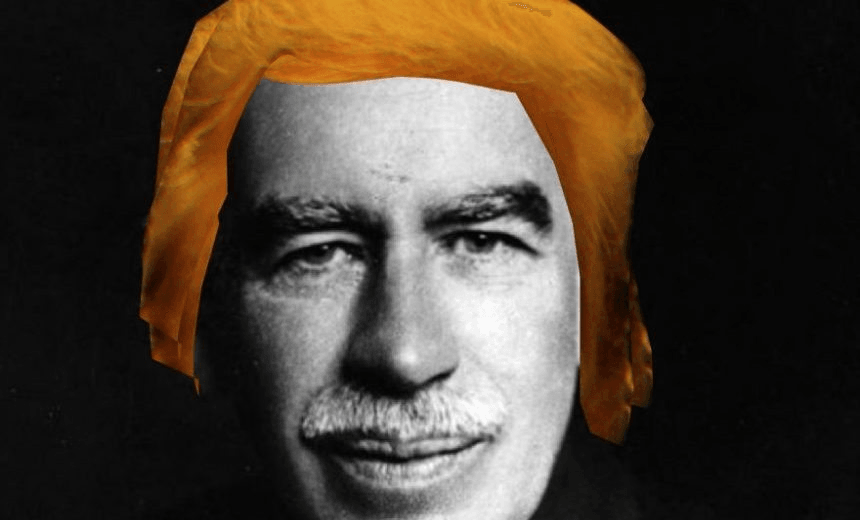Tax cuts and big state spending on infrastructure in pursuit of growth? Donald Trump’s economic promises make him sound a lot like the famed British economist – and Keynesians won’t know whether to laugh or cry, writes Ryan Greenaway-McGrevy.
There is a theory in political economy which states that necessary changes must come from the least expected actors. “Only Nixon could go to China”, as the old refrain goes.
Or take an example closer to home: Only the Labour Party could put us through the pain and restructuring necessary after the missteps and bad luck of the 1970s.
The basic idea is simple. Policymakers are not credible. And so the populace will only believe that seemingly radical reforms are necessary if the policies are proposed by the people least likely to make them.
In other words: If David Lange and Labour Party are telling us that we need to cut the top tax rate, it must be true.
And so it is with Trump and America. At least if his fiscal policy is not all bluster (which – let’s face it – it just might be).
For nearly a decade economists in the Keynesian mould called for fiscal stimulus in the aftermath of the great recession. The British economist John Maynard Keynes famously advocated for the government to step in and spend when the private sector would not or could not deliver growth.
Whilst the Federal government did spend some money through the American Recovery and Reinvestment Act of 2009, economists like Nobel Laureate Paul Krugman demanded more stimulus. With interest rates so low and businesses sitting on their hands, surely there was room for the government to step in and stimulate the economy.
The Democratic Party is a more natural home for tax-and-spend policies. But even if Obama wanted to spend more, a deeply conservative Republican congress hostile to a government-led recovery stood in his way from 2010 onward.
Fast forward to 2016, and we have a Republican President who promises to lower tax rates and spend up on infrastructure. Big time. The Committee for a Responsible Federal budget reckons his policies will increase the fiscal deficit by 5.3 trillion dollars. And that analysis does not include the costs of the infrastructure (read: wall) he has been banging on about. Even if the wall is a non-starter, on the campaign trial Trump said he’d double Clinton’s promise to spend $500 billion on new roads, airports and seas ports.
And will the Republicans in Congress – so used to decrying the bogeyman of big government – stand in his way? Unlikely. Trump just delivered three states that have not gone red in a generation. Paul Ryan and his small government rhetoric are done. Trump is the Republican Party now.
That is a scary thought. A message of hope and unity from eight years ago has now morphed into a call of despair and division. The 45th President of the US is one ugly human being.
Keynesians of the world must not know whether to laugh or cry. But we may just find out whether they were right all along.
Dr Ryan Greenaway-McGrevy is a senior lecturer in the Department of Economics at the University of Auckland Business School

